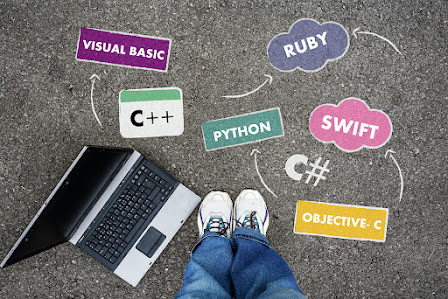Introduction
Programming languages are the bedrock of modern technology, enabling us to communicate with computers and create software applications that power our digital lives. From the early days of machine code to the high-level languages of today, programming languages have evolved, diversified, and shaped the way we develop software. In this article, we delve into the world of programming languages, exploring their types, evolution, and impact on the technology landscape.
1. The Language of Computers
Programming languages are the intermediary between human-readable code and the machine's binary language. They provide a way for developers to express instructions and algorithms in a manner understandable by both programmers and computers. Each programming language has its syntax and semantics, governing how code is written and executed.
2. A Multitude of Languages
Over the years, a plethora of programming languages have emerged, each designed to solve specific problems and cater to different development needs. Some popular programming languages include:
- Python: Known for its simplicity and readability, Python is widely used for web development, data analysis, and automation.
- Java: Renowned for its portability, Java is used in applications ranging from mobile apps to enterprise-level systems.
- C++: A powerful language used for system programming, game development, and resource-intensive applications.
- JavaScript: The language of the web, JavaScript enables interactive front-end development and web applications.
- Ruby: Emphasizing simplicity and productivity, Ruby is commonly used for web development with the Ruby on Rails framework.
- Swift: Developed by Apple, Swift is used for building iOS, macOS, watchOS, and tvOS applications.
- Rust: Known for its focus on memory safety and performance, Rust is gaining popularity in systems programming.
3. The Evolution of Programming Languages
Programming languages have evolved through several generations, each marked by technological advancements and changing development paradigms:
- First Generation (1940s-1950s): Machine language and assembly languages were used, requiring low-level understanding of hardware.
- Second Generation (1950s-1960s): High-level languages like Fortran and COBOL were introduced, allowing more abstraction from hardware.
- Third Generation (1960s-1970s): Languages like C and Pascal offered structured programming, improving code organization.
- Fourth Generation (1980s-1990s): Languages like SQL and MATLAB focused on database management and scientific computing.
- Fifth Generation (1990s-Present): Object-oriented languages like Java and Python brought about new programming paradigms.
4. Programming Paradigms
Programming languages are often categorized based on their programming paradigms, which define the approach to solving problems:
- Procedural: Emphasizes procedures or routines to solve problems.
- Object-Oriented: Organizes code around objects that represent real-world entities.
- Functional: Treats computation as the evaluation of mathematical functions.
- Scripting: Primarily used for automating repetitive tasks or interacting with other software.
- Concurrent and Parallel: Focuses on handling multiple tasks or processes simultaneously.
- Domain-Specific: Tailored for specific problem domains, like web development (HTML, CSS) or data analysis (R).
5. The Polyglot Programmer
In today's tech landscape, being a polyglot programmer—proficient in multiple programming languages—offers a competitive advantage. Different languages excel in different areas, and understanding their strengths and weaknesses allows developers to choose the best tool for the job.
6. The Road Ahead
The world of programming languages continues to evolve as technology advances. New languages emerge, while existing ones undergo updates to meet changing demands. Trends such as domain-specific languages, languages for quantum computing, and languages for emerging technologies are shaping the programming language landscape of the future.
Conclusion
Programming languages are the foundation upon which the digital world is built. From the early pioneers of computing to the diverse array of languages available today, they have enabled innovation, creativity, and problem-solving on a global scale. As technology continues to advance, programmers and developers will play a pivotal role in shaping the future by harnessing the power of programming languages to create the software that drives our interconnected world.


